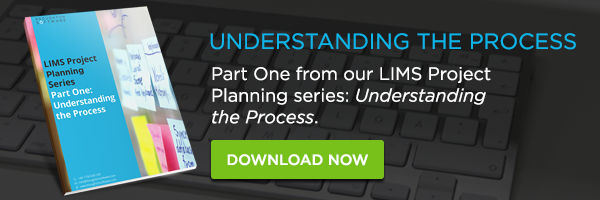 As a laboratory that has already made the leap from paper to LIMS, moving away from LIMS would be a step backwards, and certainly wouldn’t be the favourable option if your LIMS is no longer supported. What do you do when your LIMS supplier has discontinued service? In this blog, we go through the key areas to consider, so you don’t have to roll back to paper-based systems.
As a laboratory that has already made the leap from paper to LIMS, moving away from LIMS would be a step backwards, and certainly wouldn’t be the favourable option if your LIMS is no longer supported. What do you do when your LIMS supplier has discontinued service? In this blog, we go through the key areas to consider, so you don’t have to roll back to paper-based systems.
Criticality Assessment
Depending on the industry in which you operate, the criticality of each step in your laboratory data management process can vary. From a business point of view, it’s important to maintain consistent and full records of sample analysis to ensure that the customer has confidence and trust in your operations, and that you have the ability to draw conclusions on data by analysing historical records.
When your LIMS provider communicates to you that they are no longer supporting your system, the first area to consider is assessing the criticality of your LIMS. How long can your laboratory operate without the support of your LIMS provider? Within this timeframe, can you make resources available to switch to a new LIMS system? How critical your LIMS is to your laboratory will also determine how fast you need to act on the switch.
Decommissioning Process
If your LIMS provider is still in communication with you following their discontinued support, find out what their decommissioning process involves. Is there a possibility for you to get an export of your data, and what format can they provide this to you? If you haven’t already begun conversations with a new LIMS supplier, it may be advantageous to do so as soon as possible. If you find a new LIMS you wish to switch to, you may need data exported in a specific format which allows easy upload into your new system.
In addition to data export, if your discontinued system is cloud-hosted, it is important to find out what the LIMS provider will do with your data once you have moved systems. You will want to make sure that they can prove that your data has been disposed, and that they can provide evidence that this is done in a compliant manner. If you store sensitive and confidential data in your system, you want to ensure that your data does not fall into the wrong hands and is properly disposed of.
Opportunity for Improvement
As you’re looking to switch to a new LIMS system, you can also take this as an opportunity to implement improvements. Maybe your previous LIMS supplier didn’t implement new features, or didn’t listen to your feedback, and you have been using workarounds for years. This could be the perfect opportunity to address those issues and make those requirements a key part of your switch.
The best way to identify opportunities for improvement is to map your current process. Have you implemented paper worksheets to record data that cannot be captured in your current LIMS? Are you double checking data for accuracy because your LIMS lacks the functionality up front? Feedback loops and duplication of activities within a process are key opportunities for improvement. By understanding the key data inputs and data outputs of each step, you can easily build your requirements for a new LIMS which will help you in your selection process.
Business Continuity Measures
As with any system implemented, business continuity measures should always be considered. When sourcing a new LIMS provider, what processes and measures do they have in place for business continuity to circumvent disasters and in the event of insolvency. This is normally part of the terms and conditions of service or can be detailed within your service contract or service level agreement. If you are looking to move to a hosted system, you may also want to look at redundancy measures, how safe is your data storage, and what to do when access is limited (e.g. no internet connection).
As with all things related to business continuity, there are different levels of risk you will need to address. Some risks will be easily addressed within your laboratory, and other risks you would expect your LIMS supplier to have mitigating actions and processes in place.
Receiving news that your LIMS provider is discontinuing support can be disappointing, but with every cloud there is a silver lining. Turning this negative into a positive and look at this as an opportunity to update your system and implement improvements to your laboratory. Especially if you have been using workarounds to compensate for lack of functionality, your laboratory will be in a better position using a new LIMS that meets your requirements and grows with you as your grow your laboratory.







